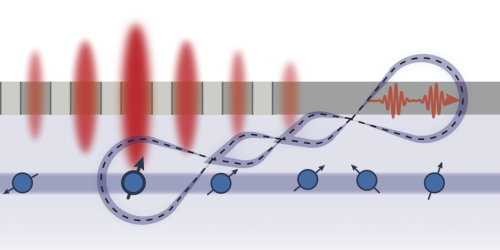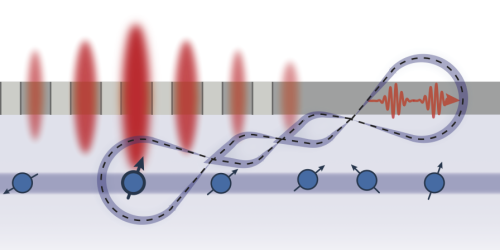Erbium Ions Apply for Quantum Repeater Job
A quantum repeater is a device—currently under development—that would relay quantum information along an optical fiber. The basic component of a quantum repeater is a long-lived quantum memory, or qubit, that can send and receive photons. A new study demonstrates that erbium ions integrated into a solid-state device are a promising candidate to fill this role, as they can interact directly with fiber-traversing photons [1].
Several options exist for quantum-repeater technologies (see Research News: The Key Device Needed for a Quantum Internet), but one of the main challenges is that most of these options interact with photons in the visible or the UV range, far from the infrared frequencies used in fiber telecommunications. One solution has been to convert the frequencies of incoming and outgoing photons, but that requires a lot of technical overhead, explains Jeff Thompson from Princeton University. He and his colleagues have a different approach: Use a qubit that couples directly to the telecom band.
Erbium ions have long been used to make lasers and optical amplifiers that operate at telecom frequencies, and more recently they’ve been shown to work as qubits. However, erbium ions are slow emitters, making them impractical as single-photon sources in a quantum repeater. Thompson and colleagues get around this by coupling erbium ions to a silicon nanocavity, boosting their emission rate by a factor of 1000. The researchers connected their device to a fiber-optic system and showed that a photon emitted by a single erbium ion remained entangled with that ion after traveling 15 km. In similar demonstrations, other repeater technologies have achieved longer distances (around 50 km) but with the added complexity of frequency conversion.
–Michael Schirber
Michael Schirber is a Corresponding Editor for Physics Magazine based in Lyon, France.
References
- M. T. Uysal et al., “Spin-photon entanglement of a single Er3+ ion in the telecom band,” Phys. Rev. X 15, 011071 (2025).





